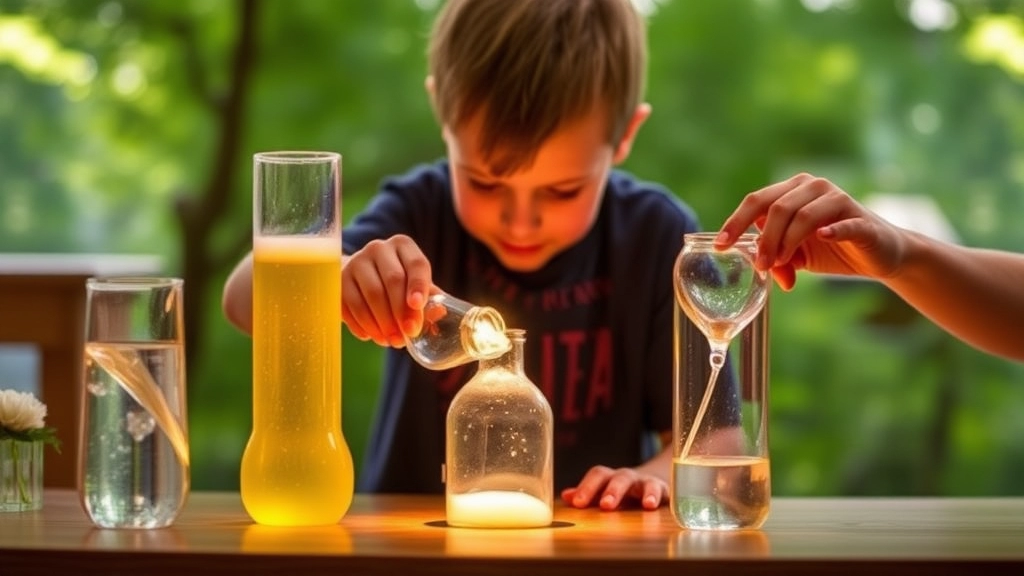Engaging Science Projects for Summer Camp
As summer camp season approaches, the challenge of keeping kids both entertained and educated looms large. One surefire way to captivate their attention is through engaging science projects. These activities are not only fun and easy to set up but also provide invaluable hands-on learning experiences. From simple chemistry experiments to creative STEM challenges, this guide covers a range of science projects for summer camps that are sure to make learning an adventure.
Imagine the excitement as kids witness a volcano eruption, build a bridge with spaghetti, or explore the stars through a telescope. With everyday materials and a bit of creativity, you can turn ordinary camp days into extraordinary learning opportunities. Whether it’s outdoor science activities that explore nature or messy but memorable experiments, these projects will stimulate young minds and foster a love for science. Ready to dive in? Let’s make this summer unforgettable with science projects for summer camp!
Fun and Easy Science Projects for Summer Camps
Alright, summer camp season is here, and you’re probably thinking, “How do I keep these kids entertained and learning at the same time?” Look no further. Fun and easy science projects are the perfect solution. They’re engaging, educational, and best of all, simple to set up.
Why Science Projects?
First off, let’s address the real question: Why should you incorporate science projects into your summer camp? Here’s why:
- Interactive Learning: Kids learn best when they’re hands-on.
- Curiosity Boosters: Science projects spark curiosity and encourage questions.
- Teamwork: Many projects require teamwork, promoting social skills.
- Fun Factor: Let’s face it, science can be a blast when done right.
Top Picks for Fun and Easy Science Projects
-
Volcano Eruption
- Materials: Baking soda, vinegar, food colouring, dish soap, and a plastic bottle.
- Steps:
- Fill the bottle with warm water, a bit of dish soap, and food colouring.
- Add baking soda.
- Pour in vinegar and watch it erupt!
- Why It Works: This classic experiment demonstrates a chemical reaction in a visually exciting way.
-
Egg Drop Challenge
- Materials: Eggs, various protective materials (straws, paper, tape, etc.).
- Steps:
- Design a protective casing for an egg using the materials provided.
- Drop the egg from a height and see if it survives.
- Why It Works: This project teaches basic principles of engineering and physics.
-
Invisible Ink
- Materials: Lemon juice, paper, cotton swabs, and a heat source.
- Steps:
- Write a message on the paper using lemon juice and a cotton swab.
- Let it dry.
- Reveal the message by heating the paper.
- Why It Works: The heat causes the lemon juice to oxidise and turn brown, revealing the hidden message.
Pro Tips for Success
- Preparation is Key: Gather all materials beforehand to avoid last-minute scrambles.
- Safety First: Always prioritise safety, especially with experiments involving heat or chemicals.
- Encourage Questions: Foster a culture of curiosity. Ask the kids what they think will happen and why.
- Keep It Fun: Remember, the goal is to make learning enjoyable. Don’t stress about perfection.
Internal Linking Opportunities
While you’re planning these activities, consider branching out into other areas like STEM activities for summer camp or indoor summer camp activities for kids. These can complement your indoor projects and keep the excitement levels high.
Hands-On Experiments with Everyday Materials
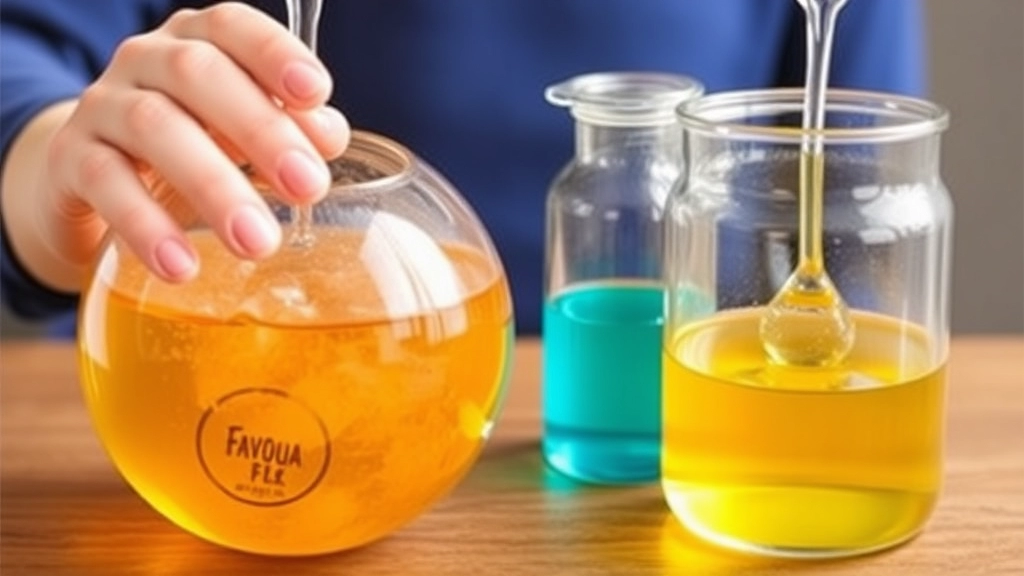
Ever wonder how to keep kids engaged at a summer camp without breaking the bank?
You’re not alone.
We want to make science fun and accessible, right?
Let’s dive into some hands-on experiments using everyday materials.
No fancy equipment needed.
Just stuff you’ve got lying around the house.
Here’s the deal:
Why Everyday Materials?
- Cost-effective: No need to buy expensive kits.
- Relatable: Kids see these items daily, making science feel real.
- Convenient: Easy to find and use.
Top Experiments to Try:
- Baking Soda and Vinegar Volcano
- Mix baking soda and vinegar.
- Watch the eruption.
- Talk about chemical reactions.
- Lemon Battery
- Insert a copper coin and a zinc nail into a lemon.
- Connect wires to a small LED.
- Voila! Electricity from fruit.
- Invisible Ink
- Use lemon juice as ink.
- Heat the paper to reveal the message.
- Discuss the science of oxidation.
Why These Experiments Work:
- Interactive: Kids love getting their hands dirty.
- Educational: Teaches basic scientific principles.
- Fun: Who doesn’t love a good explosion or hidden message?
Pro Tips for Success:
- Safety First: Always supervise and use protective gear.
- Encourage Questions: Foster curiosity by asking why it works.
- Make it a Challenge: Can they predict the outcome?
Real Talk:
I’ve seen kids light up doing these.
It’s like magic.
But it’s science.
And it’s all with everyday materials.
So, grab those lemons and baking soda.
Let’s make science the highlight of your summer camp.
Outdoor Science Activities to Explore Nature
Ever wondered how to keep kids engaged while also teaching them something valuable during summer camp? Outdoor science activities are the perfect answer. They’re fun, educational, and get everyone out in the fresh air. Let’s dive into some easy-to-implement ideas that will make your camp a hit.
Why Outdoor Science Activities?
Kids are naturally curious about the world around them. Outdoor science activities allow them to explore nature while learning important scientific concepts. Plus, it’s a great way to get them moving and away from screens.
Nature Scavenger Hunt
A nature scavenger hunt is a simple yet effective way to get kids excited about the outdoors. Here’s how to set it up:
- Create a List: Include items like different types of leaves, rocks, insects, and flowers.
- Provide Tools: Give them magnifying glasses, notebooks, and pencils.
- Set Rules: Make sure they know not to disturb wildlife or pick plants.
This activity not only teaches kids about biodiversity but also hones their observation skills.
Stream Study
If you have access to a stream or pond, a stream study can be incredibly engaging. Here’s what you need:
- Nets and Buckets: For catching and observing small aquatic creatures.
- Identification Charts: Help kids identify what they find.
- Safety Gear: Ensure everyone has water shoes and gloves.
Kids will love discovering different types of fish, insects, and plants. Plus, they’ll learn about ecosystems and water quality.
Leaf Rubbings and Tree Identification
This activity combines art and science, making it a hit among kids of all ages. Here’s how to do it:
- Collect Leaves: Gather leaves from different trees.
- Rubbing Materials: Provide paper and crayons.
- Identification Guide: Use a tree identification guide to learn about each species.
Not only will kids create beautiful art, but they’ll also learn to identify various trees and understand their role in the ecosystem.
Bird Watching
Bird watching is a fantastic way to teach kids about different bird species and their behaviours. Here’s what you need:
- Binoculars: Essential for spotting birds from a distance.
- Bird Guide: Helps identify different species.
- Journal: Encourage kids to note down their observations.
This activity can be done almost anywhere and is a great way to teach kids about the importance of conservation.
Soil Sampling
Soil sampling is an excellent way to introduce kids to geology and agriculture. Here’s how to get started:
- Sampling Kits: Provide small shovels and containers.
- pH Test Strips: To test the acidity of the soil.
- Microscopes: If available, for a closer look at soil composition.
Kids will learn about different types of soil, what plants grow best in each, and why soil health is crucial for the environment.
Star Gazing
If your camp runs into the evening, star gazing can be a magical experience. Here’s what you need:
- Telescopes: Even a basic one can provide stunning views.
- Star Maps: Help kids identify constellations.
- Blankets: For lying down and enjoying the night sky.
This activity can spark an interest in astronomy and teach kids about the universe beyond our planet.
If you’re looking for more fun and educational activities, check out our Summer Camp Activity Crossword Clue Guide for more ideas. Additionally, for a comprehensive list of top camps, visit our Top Reviews for Summer Camps.
Creative STEM Challenges for Camp Groups
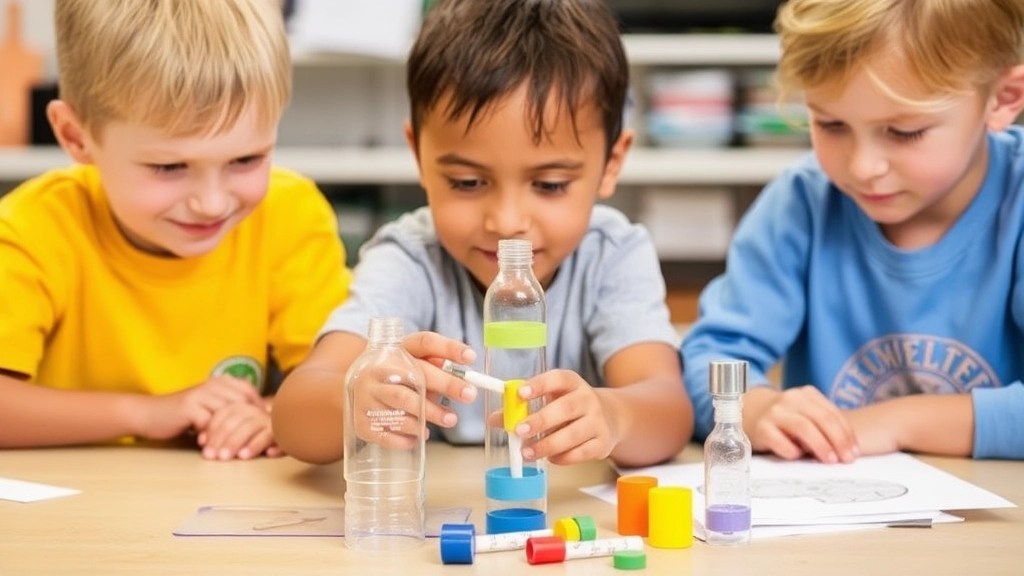
Ever wondered how to keep kids engaged in STEM without them zoning out?
I’ve got you covered.
Let’s dive into some creative STEM challenges that’ll have your camp groups buzzing with excitement.
Why STEM Challenges?
Kids want to learn, but they also want to have fun.
STEM challenges tick both boxes.
They spark curiosity and encourage teamwork.
Simple Ideas to Get Started
1. Build a Bridge with Spaghetti:
- Materials: Spaghetti, marshmallows, tape
- Challenge: Who can build the strongest bridge?
- Why it works: It’s fun, it’s messy, and it’s all about engineering.
2. Egg Drop Experiment:
- Materials: Eggs, straws, rubber bands, cardboard
- Challenge: Create a contraption to protect an egg from a fall.
- Why it works: It’s all about problem-solving and creativity.
Outdoor STEM Fun
3. Nature Scavenger Hunt:
- Task: Find items that match a list of scientific properties.
- Why it works: Combines exploration with learning.
4. Solar Oven S’mores:
- Materials: Pizza boxes, foil, plastic wrap
- Challenge: Cook s’mores using sunlight.
- Why it works: Introduces basic principles of solar energy.
Group Dynamics
Encourage teamwork.
- Mix up the groups.
- Rotate roles.
- Celebrate every win.
Real Stories
Last summer, I watched a group of kids transform into little engineers with just spaghetti and marshmallows.
Their faces lit up when their bridge held together.
That’s the magic of STEM.
Simple Chemistry Projects with Exciting Reactions
Ever wondered how you can make chemistry fun and educational for kids at summer camps? What if I told you that you could do it with simple, everyday materials? Imagine the excitement on their faces when they see a volcano erupt or make slime that glows in the dark. Yeah, that’s the kind of reaction we’re aiming for.
Why Chemistry Projects?
Kids are naturally curious, and chemistry projects can feed that curiosity while teaching them about the world around them. Plus, who doesn’t love a good explosion or colour change? These projects are not just engaging; they also make learning about chemical reactions a hands-on experience.
Easy Chemistry Projects to Try
Baking Soda and Vinegar Volcano
- Materials Needed:
- Baking soda
- Vinegar
- Dish soap
- Food colouring
- A container (like a plastic bottle)
- Steps:
- Fill the container with baking soda.
- Add a few drops of dish soap and food colouring.
- Pour in the vinegar and watch the eruption!
Magic Milk
- Materials Needed:
- Milk
- Food colouring
- Dish soap
- Cotton swabs
- Steps:
- Pour milk into a shallow dish.
- Add drops of different food colouring.
- Dip a cotton swab in dish soap and touch it to the milk. Watch the colours dance!
Homemade Slime
- Materials Needed:
- School glue
- Baking soda
- Contact lens solution
- Food colouring (optional)
- Steps:
- Mix glue and baking soda in a bowl.
- Add food colouring if desired.
- Stir in contact lens solution until the mixture turns into slime.
Why These Projects Work
These projects are simple yet effective because they use materials that are easy to find and safe for kids to handle. Plus, they produce visible, exciting reactions that make the science behind them easy to understand.
Tips for Success
- Safety First: Always supervise the kids and ensure they wear safety goggles and gloves if needed.
- Explain the Science: Take a moment to explain the chemical reactions happening in each project.
- Get Everyone Involved: Divide the kids into small groups and let them take turns adding ingredients and making observations.
If you’re looking for more ideas to keep kids engaged, check out our summer camp ideas and our list of fun games for an unforgettable summer camp.
Space-Themed Activities for Aspiring Astronomers
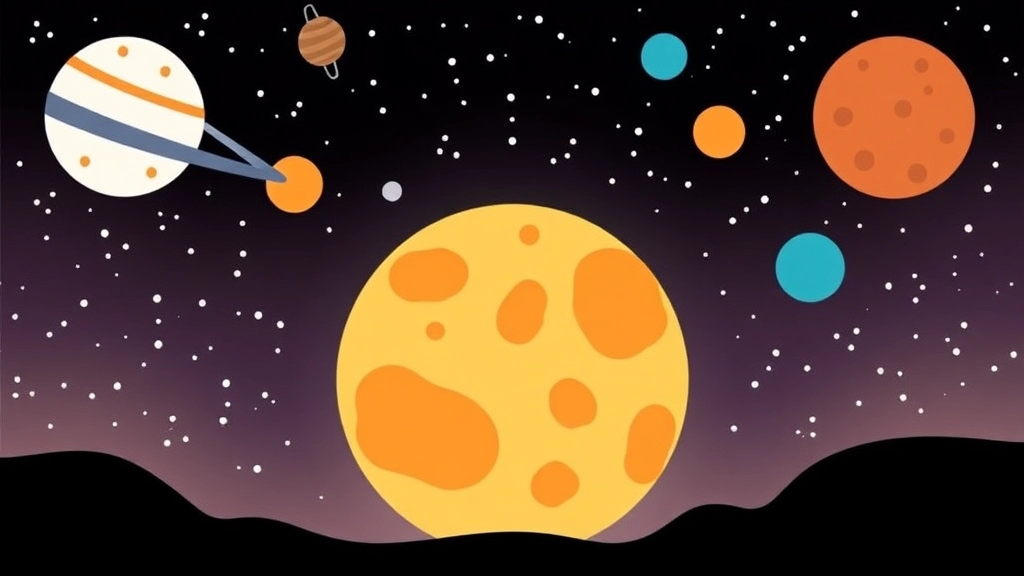
Ever wondered how to get kids excited about astronomy at summer camp?
Feeling overwhelmed by the idea of teaching space concepts to young minds?
Don’t worry, I’ve got you covered.
Let’s dive into some space-themed activities that are fun, easy, and sure to spark curiosity among aspiring astronomers.
Stargazing Nights
First things first, nothing beats a good old stargazing session.
- Find a dark spot: Away from city lights.
- Bring telescopes or binoculars: Even a simple pair can make a difference.
- Star maps: Hand these out so kids can identify constellations.
- Storytime: Share myths and stories related to the constellations.
DIY Solar System Models
Kids love hands-on projects, and building a solar system model is a classic.
- Materials: Foam balls, paint, and strings.
- Instructions: Paint each ball to represent a planet.
- Fun Fact Sheets: Include interesting facts about each planet.
Rocket Launches
Who doesn’t love a good rocket launch?
- Bottle Rockets: Use baking soda and vinegar for a safe, thrilling launch.
- Safety First: Always supervise and ensure a safe distance.
- Explain the Science: Discuss the chemical reaction that propels the rocket.
Moon Phases with Oreos
Yes, you read that right—Oreos!
- Materials: Oreos and a plastic knife.
- Activity: Use the cream filling to demonstrate the different phases of the moon.
- Discussion: Talk about why the moon has phases.
Space Trivia Games
Make learning competitive and fun.
- Teams: Split the kids into groups.
- Questions: Cover topics like planets, stars, and space missions.
- Prizes: Small rewards for the winning team.
Build a Mars Rover
Get creative with everyday materials.
- Materials: Cardboard, straws, rubber bands.
- Instructions: Design and build a simple rover.
- Challenge: Test whose rover can travel the farthest.
Space-Themed Storytime
Reading can be just as engaging.
- Books: Choose space-themed children’s books.
- Discussion: Encourage kids to ask questions and share their thoughts.
- Follow-Up Activity: Have them draw their favourite part of the story.
Planetarium Visit
If possible, organise a trip to a local planetarium.
- Experience: Let the professionals take over.
- Interactive Exhibits: Hands-on learning at its best.
- Follow-Up: Discuss what they learned and saw.
Engineering and Building Challenges for Campers
Alright, let’s dive into the engineering and building challenges for campers. I know what you’re thinking: “How do I keep these kids engaged without losing my mind?” Trust me, I’ve been there. You want something that’s fun, educational, and not a logistical nightmare. So, let’s break it down.
Why Engineering Challenges?
First off, why bother with engineering challenges? Simple. Kids love to build stuff. It’s hands-on, it’s creative, and it’s a fantastic way to sneak in some learning without them even realising it. Plus, it teaches problem-solving, teamwork, and resilience.
Real Concerns from Camp Leaders
- “What if the kids get bored?”
- “How do I manage different skill levels?”
- “What materials do I need?”
We’ll tackle all these worries head-on. So, let’s get into some challenges that are sure to be hits.
Top Engineering Challenges
Bridge Building with Spaghetti and Marshmallows
- Materials: Spaghetti, marshmallows, tape
- Objective: Build the strongest bridge possible.
- Why It Works: It’s simple yet challenging. Kids get to experiment with structures and learn about weight distribution.
- Tips: Set a time limit and offer prizes for the most creative and strongest designs.
Egg Drop Challenge
- Materials: Eggs, straws, tape, paper, bubble wrap
- Objective: Create a contraption that keeps an egg from breaking when dropped.
- Why It Works: This challenge is a classic for a reason. It’s messy, fun, and teaches kids about impact forces and cushioning.
- Tips: Use a variety of materials and let the kids brainstorm their own solutions.
Paper Tower Challenge
- Materials: Newspaper, tape
- Objective: Build the tallest freestanding tower.
- Why It Works: It’s a great way to teach about stability and structure without needing fancy materials.
- Tips: Encourage kids to think about the base and the centre of gravity.
Managing Different Skill Levels
- Mixed-age groups: Pair older kids with younger ones for mentorship.
- Skill variety: Offer different levels of difficulty within each challenge.
- Encouragement: Celebrate effort and creativity, not just the final product.
Materials and Prep
You don’t need a ton of fancy stuff. Most of these challenges use everyday materials. Here’s a quick list to get you started:
- Spaghetti
- Marshmallows
- Tape
- Newspaper
- Straws
- Bubble wrap
- Eggs
Real-Life Example
I remember one summer, we had a group of kids who were all about the Egg Drop Challenge. They spent hours testing different designs. One kid even used a parachute made from a plastic bag. The look on their faces when their egg survived the drop was priceless. It wasn’t just about the egg; it was about the process and the teamwork.
For more ideas on engaging activities, check out our Summer STEAM Camp page where we boost skills and creativity through fun challenges.
Messy but Memorable Science Experiments
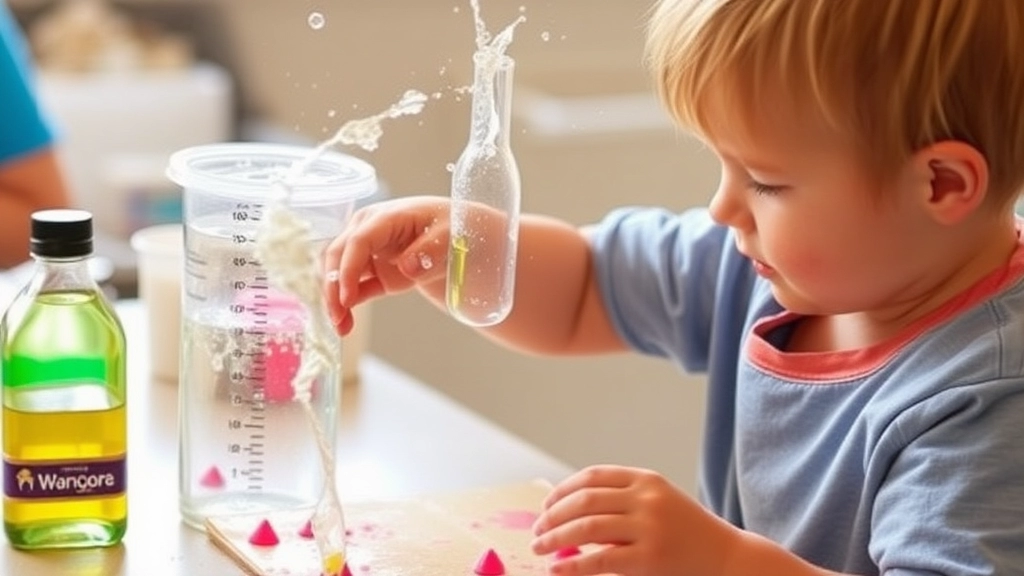
Ever wondered how to keep kids engaged and excited about science?
Messy but memorable science experiments are your answer.
Kids love getting their hands dirty, and these experiments are perfect for that.
Plus, they learn a ton without even realising it.
Here’s how you can make it happen.
Why Messy Experiments Work
Kids get bored easily.
But give them something messy and fun, and they’re hooked.
Messy experiments:
- Spark curiosity
- Engage multiple senses
- Make learning fun and interactive
Top Messy Science Experiments
Here are some tried-and-true messy experiments that kids will love:
1. Volcano Eruption
- Materials Needed: Baking soda, vinegar, food colouring, dish soap, clay or playdough.
- Steps:
- Create a volcano shape with clay.
- Add baking soda inside the volcano.
- Pour vinegar mixed with food colouring and dish soap.
- Watch the eruption!
2. Slime Making
- Materials Needed: Glue, baking soda, contact lens solution, food colouring.
- Steps:
- Mix glue with a bit of water.
- Add baking soda and stir.
- Add food colouring.
- Slowly add contact lens solution until it forms slime.
- Knead it until it’s not sticky anymore.
3. Oobleck
- Materials Needed: Cornstarch, water, food colouring.
- Steps:
- Mix cornstarch and water in a bowl.
- Add food colouring if desired.
- Play with the mixture—it’s solid when you squeeze it and liquid when you let it flow.
Tips for Success
Want to make these experiments even better?
Here are some tips:
- Preparation: Have all materials ready before starting.
- Safety First: Ensure kids wear aprons and goggles.
- Supervision: Always keep an eye on the kids.
- Discussion: Explain the science behind each experiment.
Real Stories
I remember when we did the volcano experiment at our camp.
The kids were in awe as the “lava” flowed out.
They couldn’t stop talking about it for days.
And the best part?
They learned about chemical reactions without even realising it.
Science Games and Puzzles to Stimulate Young Minds
Ever tried to keep a group of kids engaged without their eyes glazing over? Yeah, it’s tough. But here’s the deal: science games and puzzles can be a game-changer. They’re not just fun; they’re brain boosters. Let’s dive into some killer ideas that’ll keep those young minds buzzing.
Why Science Games and Puzzles?
First off, why even bother with science games and puzzles? Well, here’s the thing:
- Engagement: Kids love games. Turn learning into a game, and they won’t even realise they’re learning.
- Problem-Solving Skills: Puzzles force kids to think critically and solve problems.
- Teamwork: Many science games require collaboration, teaching kids how to work together.
Types of Science Games and Puzzles
Alright, let’s break it down. Here are some of the best types of science games and puzzles you can incorporate into your summer camp:
Escape Room Challenges
- Scenario: Create a science-themed escape room where kids have to solve puzzles to âescape.â
- Materials: Everyday items like locks, keys, and clues related to science concepts.
- Outcome: Boosts critical thinking and teamwork.
Science Bingo
- Scenario: Traditional Bingo but with a twist. Use science terms, elements, or concepts instead of numbers.
- Materials: Bingo cards with science terms, markers.
- Outcome: Reinforces vocabulary and concepts in a fun way.
Mystery Boxes
- Scenario: Fill boxes with different science-related items. Kids have to guess what’s inside using clues.
- Materials: Boxes, various science items (like magnets, rocks, etc.).
- Outcome: Encourages curiosity and deductive reasoning.
Periodic Table Battleship
- Scenario: Similar to the classic Battleship game but using the periodic table.
- Materials: Printouts of the periodic table, markers.
- Outcome: Helps kids learn elements and their positions on the table.
How to Set Up These Games
Setting up these games doesn’t have to be a headache. Here’s a quick guide:
- Plan Ahead: Know what materials you need and gather them beforehand.
- Keep It Simple: Don’t overcomplicate the rules. The simpler, the better.
- Engage the Kids: Get them involved in setting up. It builds anticipation.
Real-Life Example: The Escape Room Hit
Let me tell you about the time we set up a science escape room. The kids were split into teams, each given a series of puzzles related to different science concepts. They had to decode messages, find hidden keys, and solve riddles to âescapeâ the room. The excitement was off the charts, and the best part? They were learning without even realising it.
For more hands-on experiments, check out our section on Fun Learning Adventures Await. And if you’re looking to take the fun outside, don’t miss our guide on Fun and Learning Combined.
How to Organise a Week-Long Science Camp Programme
Ever wondered how to organise a week-long science camp programme that keeps kids engaged and learning?
The thought of planning might feel a bit overwhelming, but trust me, it’s easier than you think.
Let’s break it down.
Start with a Plan
First things first, planning.
You can’t just wing it.
Here’s what you need:
- Theme for Each Day: Make each day unique. Think chemistry day, space day, nature day, etc.
- Daily Schedule: Structure is key. Have a mix of activities, breaks, and free time.
- Materials List: Know what you need in advance. No one likes last-minute scrambles.
Day 1: Fun and Easy Science Projects
Kick off with some fun and easy science projects.
- Volcano Eruptions: Baking soda and vinegar never fail.
- Balloon Rockets: Simple but fascinating.
Kids love starting with hands-on activities that are easy yet impressive.
Day 2: Hands-On Experiments with Everyday Materials
Day two is all about hands-on experiments.
Use stuff you already have at home.
- Lava Lamps: Oil, water, and food colouring.
- Invisible Ink: Lemon juice and a heat source.
These experiments show that science is all around us.
Day 3: Outdoor Science Activities
Get them outside.
Outdoor science activities get kids moving and exploring nature.
- Nature Scavenger Hunt: Find leaves, rocks, bugs.
- Weather Station: Measure temperature, wind speed, and more.
Nature is the best classroom.
Day 4: Creative STEM Challenges
Time for some creative STEM challenges.
These are perfect for teamwork and problem-solving.
- Build a Bridge: Use popsicle sticks and glue.
- Egg Drop Challenge: Protect an egg from breaking when dropped.
Kids learn best by doing.
Day 5: Simple Chemistry Projects
Let’s dive into simple chemistry projects.
Reactions that wow but are safe.
- Slime Making: Always a hit.
- Baking Soda and Vinegar Rockets: A little mess, a lot of fun.
Chemistry can be both educational and exciting.
Day 6: Space-Themed Activities
Blast off with space-themed activities.
Inspire the next generation of astronauts.
- Stargazing: Identify constellations.
- DIY Solar System: Create a model with foam balls.
Space is endlessly fascinating.
Day 7: Engineering and Building Challenges
Wrap up with engineering and building challenges.
- Marble Run: Use cardboard tubes and tape.
- Tower Building: Who can build the tallest tower with marshmallows and spaghetti?
These activities push creativity and engineering skills.
Keep It Engaging
Throughout the week, keep it engaging.
- Mix It Up: Vary activities to avoid boredom.
- Storytelling: Share stories behind experiments. It makes learning personal.
- Feedback: Ask kids what they enjoyed. Adjust as needed.
Organising a week-long science camp programme doesn’t have to be daunting.
Start with a solid plan.
Mix in fun, hands-on activities.
Get outside and explore.
Make it memorable with creative challenges.
By the end of the week, you’ll have a group of budding scientists eager for more.
And remember, the keyword to success is engagement.
Ready to get started? Let’s make science fun!
FAQs about Science Projects for Summer Camp
What are some cost-effective science experiments for summer camp?
Using everyday materials like baking soda, vinegar, lemons, and household items can make science experiments cost-effective. These items are easy to find and relate to kids’ daily lives, making science feel real and engaging.
Why should we use everyday materials for science experiments?
Everyday materials are cost-effective, relatable, and convenient. They eliminate the need for expensive kits and make science more accessible and fun for kids.
Can you suggest some hands-on science experiments?
Sure! Here are a few:
- Baking Soda and Vinegar Volcano: Mix baking soda and vinegar to watch an eruption and discuss chemical reactions.
- Lemon Battery: Insert a copper coin and a zinc nail into a lemon to generate electricity and light an LED.
- Invisible Ink: Use lemon juice as ink and heat the paper to reveal the message, explaining the science of oxidation.
What are some creative STEM challenges for camp groups?
Here are a couple of ideas:
- Build a Bridge with Spaghetti: Use spaghetti, marshmallows, and tape to see who can build the strongest bridge.
- Egg Drop Experiment: Create a contraption using eggs, straws, rubber bands, and cardboard to protect an egg from a fall.
How can we incorporate outdoor STEM activities?
Consider activities like:
- Nature Scavenger Hunt: Find items that match a list of scientific properties.
- Solar Oven S’mores: Use pizza boxes, foil, and plastic wrap to cook s’mores using sunlight.
What are some space-themed activities for aspiring astronomers?
Here are a few engaging activities:
- Stargazing Nights: Use telescopes or binoculars, star maps, and share constellation stories.
- DIY Solar System Models: Build models using foam balls, paint, and strings.
- Rocket Launches: Use baking soda and vinegar for safe, thrilling launches.
How can we make science experiments memorable for kids?
Messy experiments are a great way to keep kids engaged. They spark curiosity, engage multiple senses, and make learning fun and interactive. Examples include Volcano Eruption, Slime Making, and Oobleck.
What safety measures should we take during science experiments?
Always supervise the kids, use protective gear like aprons and goggles, and have all materials prepared beforehand. Ensure a safe environment and explain the science behind each experiment to foster understanding.
How can we encourage teamwork during STEM activities?
Encourage kids to work in groups, rotate roles, and celebrate every win. This fosters teamwork, communication, and a sense of achievement.
What are some tips for successful science experiments at camp?
Here are some tips:
- Preparation: Have all materials ready before starting.
- Safety First: Ensure kids wear aprons and goggles.
- Supervision: Always keep an eye on the kids.
- Discussion: Explain the science behind each experiment.
References
-
Baking Soda and Vinegar Volcano
-
Lemon Battery
-
Invisible Ink

